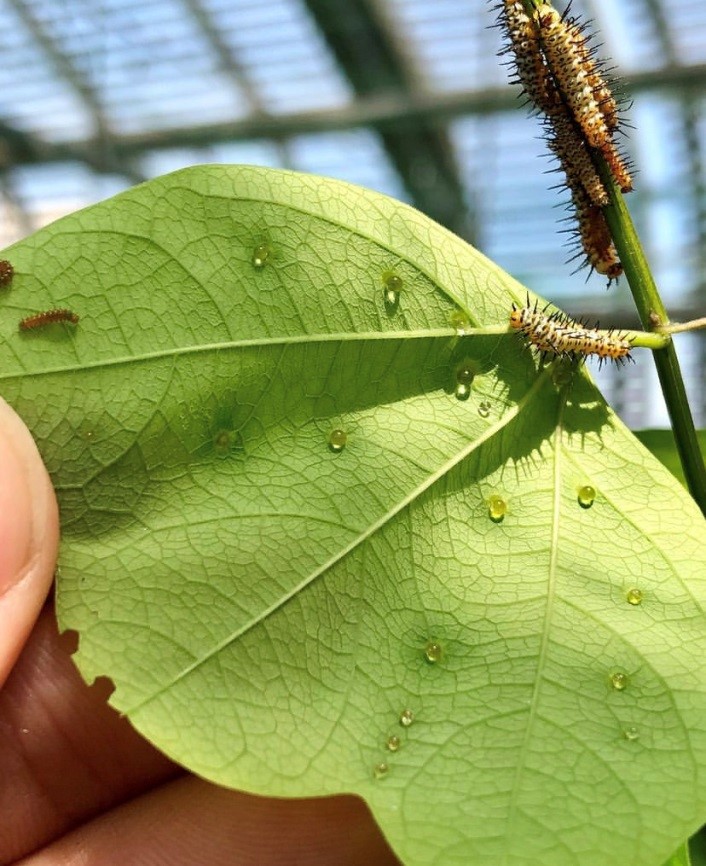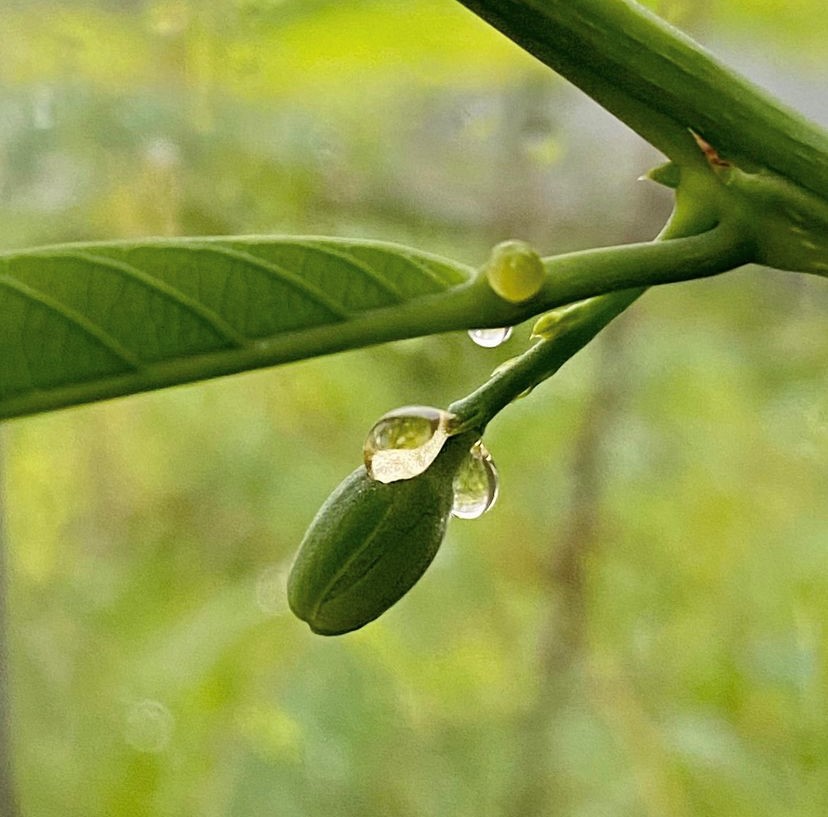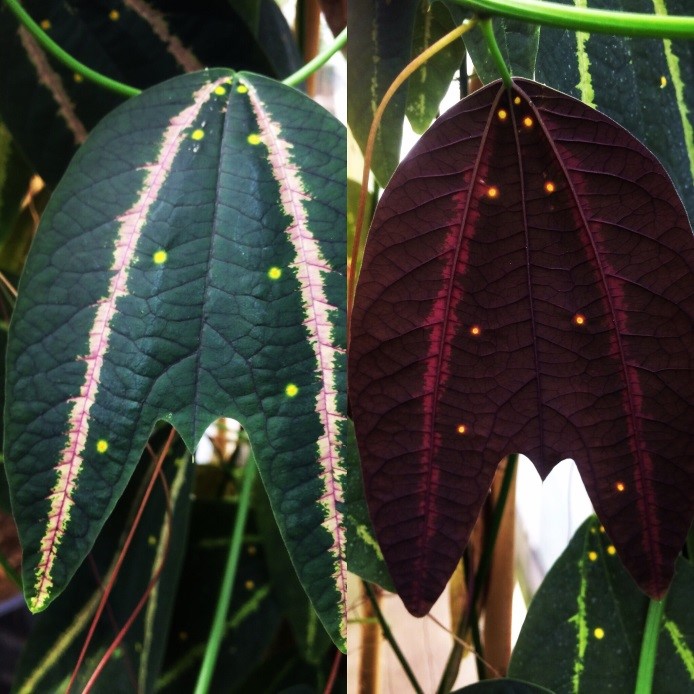Most reading this are familiar with the life cycle of a butterfly. An egg is laid on its host plant, the egg hatches into a caterpillar, the caterpillar eats the plant, the caterpillar forms a chrysalis, and then an adult butterfly emerges to continue the cycle. It’s easy to think of the plants in this process as playing an altruistic role; the plant only exists to feed the caterpillar… right? Well, no. The plant is a living and breathing organism trying to survive long enough to reproduce and ensure its genes make it to the next generation. Being defoliated by caterpillars, although this seldom kills the plant, is a catastrophic setback in a plants life cycle, especially that of passionvines.
Passionvines, genus Passiflora, are the sole host plant for longwing butterflies, genus Heliconius. These butterflies are the backbone of butterfly houses around the world for their bright colors and active behavior. The predator/prey relationship between these butterflies and their host plant has driven the passionvines to extreme lengths to protect themselves. Chemical warfare, bribing predatory insects, mimicry, and structural defenses are all used by these plants to avoid being eaten by caterpillars or ward off female butterflies looking for a suitable part of the plant on which to lay their eggs.

Most passionvine leaves and unripe fruit are toxic to some degree or another. Many of them produce cyanide and similar poisons to make themselves distasteful to herbivorous animals. Even if an animal gets past the acrid taste of the plants, the toxins would make them feel ill and would be avoided in the future as inedible. The caterpillars of the longwing butterflies, however, are able to not only ingest these toxins but can sequester them into their tissues as they grow making them, and the adult butterflies they will turn into, just as toxic and distasteful as their host plant. This is not unique among butterflies; the monarch is a well-known example. Feeding on the toxic milkweed plants makes the caterpillars and adults of the monarch toxic to predators. The bright coloration is a warning to would be predators that eating these butterflies would not be profitable, a concept known as aposematic coloration. Longwings also employ bright colors and patterns to warn of their toxicity, much to the delight of visitors to the Cockrell Butterfly Center.
Since the use of poison isn’t enough to keep the passionvines from being eaten, what else can they try? Well… the enemy of my enemy is my friend, right? Wasps and ants are voracious predators, and can clear a whole plant of caterpillars as food for their growing larvae. Any summer picnic goer has surly witnessed sugary foods draw in ants and wasps faster than anything else (as sugar is what they eat as adults). Passionvines employ these predatory insects with sugar secreting structures on their leaves and stems known as extrafloral nectaries; these are nectar producing glands in areas other than the flowers of plants. Many different types of plants use this strategy, and passionvines will produce copious amounts of nectar from these glands when sending up new growth or when they are actively being eaten.


Passionvines use mimicry and deception as a way to avoid detection or ward off female longwing butterflies. A few species of longwings are cannibalistic, laying eggs on a plant that already has eggs on it wouldn’t be wise as the existing eggs would hatch first and potentially eat any eggs deposited later. Some passionvines that are host to the cannibalistic longwings have evolved “egg mimic” spotting on their leaves. These bright yellow spots on the new leaves or shoots are enough to make a female think twice before depositing her eggs. The deception of passionvines doesn’t stop there. Many species are known to have different shaped leaves at various points in their lifecycle. Longwings seek out the particular shape, among other attributes, of their host plants leaves.

Some species of passionvine have even evolved sharp spiny structures on their leaves and stems called trichomes. These are extremely effective in defending against hungry caterpillars, as most are unable to move around the plant without being impaled. At least one species of longwing has evolved to break through even this defense. Caterpillars of Heliconius charithonia, the zebra longwing, are able chew the trichomes down to nubs before continuing on to eating the leaves of the plant.
This evolutionary arms race between longwing butterflies and passionvines has been going on for millions of years. It’s clear that the development of these defense mechanisms in the passionvines is in direct response to predation by the longwing butterflies. This has been an area of interest and study since Henry Walter Bates, an English naturalist and explorer, began studying these butterflies in the mid-19th century and continues on to this day.






